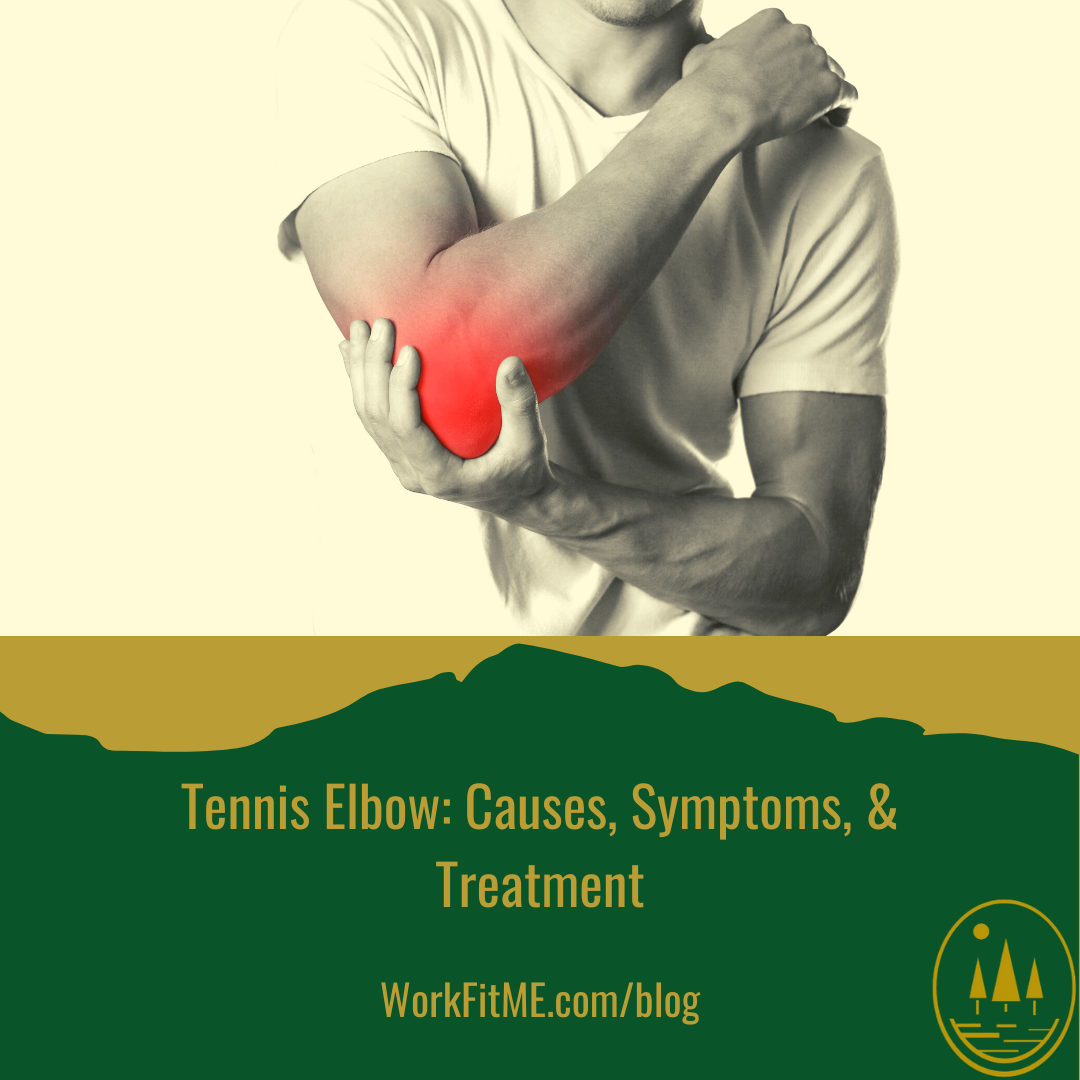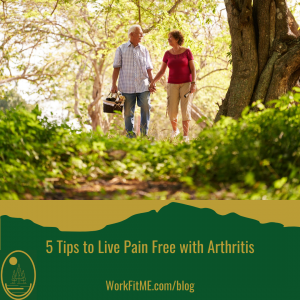Staying on the upper extremity trend, this week’s blog will take a look at Tennis elbow. Tennis elbow or lateral epicondylitis is a very common injury, especially in the workplace. That means it is very rarely caused by tennis in the modern day. By definition, tennis elbow is inflammation on the outside of the elbow where a group of tendons meet. These tendons are attached to the muscles that help extend the wrist, or point the hand and fingers up. Tennis elbow is a very common cause of elbow pain in adults and falls under the number one category for cause of injury at work: overexertion/repetitive motions. The good news, tennis elbow is very treatable and preventable.
Causes
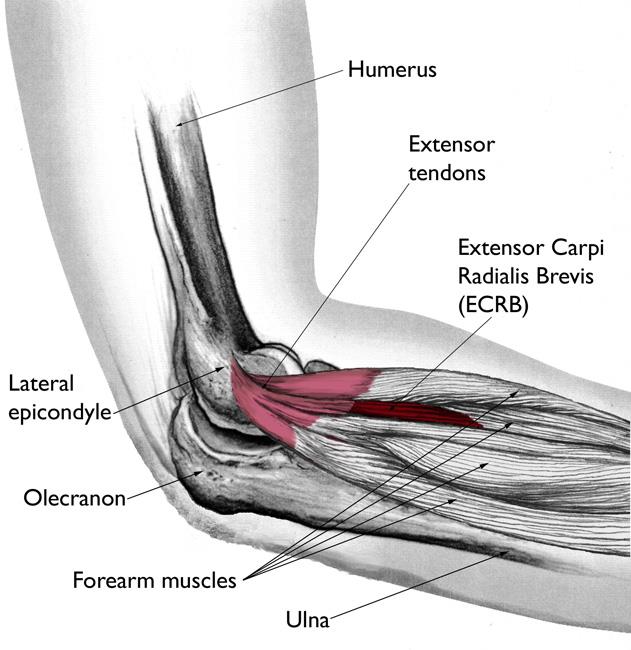
The reason tennis elbow is called tennis elbow is the first repetitive activity that caused over use of this muscle group was tennis. In modern day, any type of job that requires repetitive use of the wrist, hand, or fingers can produce inflammation in the tendons. Changes in the amount, type, duration, or position of the repetitive activity can all cause more stress to be placed on the wrist extension musculature leading to inflammation as the tendons rub against each other repeatedly.
Poor posture or positioning can also lead to the inflammation that causes tennis elbow. In a previous blog on posture, we discussed the fact that there is no such thing as ‘perfect posture’. That is true, however; certain sustained positions can interfere with how our body moves and can even have an affect on our nerves and blood flow. The blood flow is important here. With a more rounded posture, the major blood vessels that send blood to and away from the arms can be slightly blocked. As the muscles work, there are chemicals given off as a byproduct of using energy to work that the blood stream is supposed to drain out. If that byproduct can’t be filtered out and it sits around the tendons, that can be another source of irritation and inflammation. We really have to look at more than just the elbow itself when preventing and treating a condition like tennis elbow.
Symptoms
The most common symptom of tennis elbow is pain directly on the outside of the elbow on the bone. A pocket of swelling can also be seen there if the inflammation is bad enough. The pain can also radiated down the arm toward the forearm but does not usually radiate up the arm toward the shoulder. Numbness and tingling can also be present if the nearby nerves are affected by the inflammation.
Nerve involvement causing pain or numbness and tingling in the elbow area can make an accurate diagnosis of tennis elbow tricky. Many things can cause that nerve irritation, and it may not actually be happening at the elbow. If the inflammation at elbow is bad enough, nerves that run right around that area of the elbow could also become inflamed. That would produce pain at the elbow that could radiate down the forearm. If the pain or numbness and tingling starts above the elbow, the nerve irritation and the symptoms at the elbow are very unlikely to be coming form the elbow at all. Even if the worst pain is at the elbow. A proper evaluation by a physical therapist can tell the difference between the possible causes of nerve involvement and if tennis elbow is truly the cause of symptoms.
Treatment
The number way to treat tennis elbow is to prevent it all together. Taking short breaks to complete stretching during the day (such as micro-stretching) and to prevent an activity from becoming too repetitive can be very helpful. However; if the symptoms are already present there are a few important steps to take.
1. Decreasing the amount of time the repetitive tasks are done.
This doesn’t mean you should stop them all together, but if the pain increases after a certain amount of time during a certain activity, taking a break BEFORE the pain increases is crucial.
2. Gently stretching and micro-stretching during the day
Completing a proper stretch of the wrist extensors holding for 20-30 seconds, 3-5 times, and completing 2-3 times per day will improve blood flow to the area and improve flexibility of the muscles. Doing shorter bouts of the same stretch (10 seconds on each side) every 1-2 hours during the day (AKA micro-stretching), decreases the amount of time the wrist muscles are in a stressful position while also improving blood flow to the area and giving positive input to the nervous system to help decrease pain.
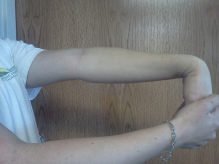
3. Eccentric Strengthening
Some may have heard this called negatives. Basically it means the uninvolved side lifts the weight up and the involved muscle group then works to slowly lower the weight back to the start position. If eccentrics are done with the correct weight, proper form, and progressed appropriately they are very effective at decreasing pain while also improving strength and tolerance to repetitive activity.
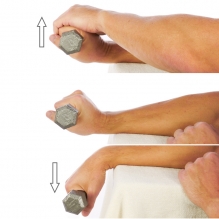
4. Dry Needling
The use of thin filiform needles being placed in the inflamed tendon and wrist extensor muscles is also a useful tool. Dry needling has been shown to improve blood flow to the area, improve tissue organization, promote healing and give input to the nervous system to decrease pain. In combination with the activities above, I have found it very effective at treating tennis elbow with my clients.
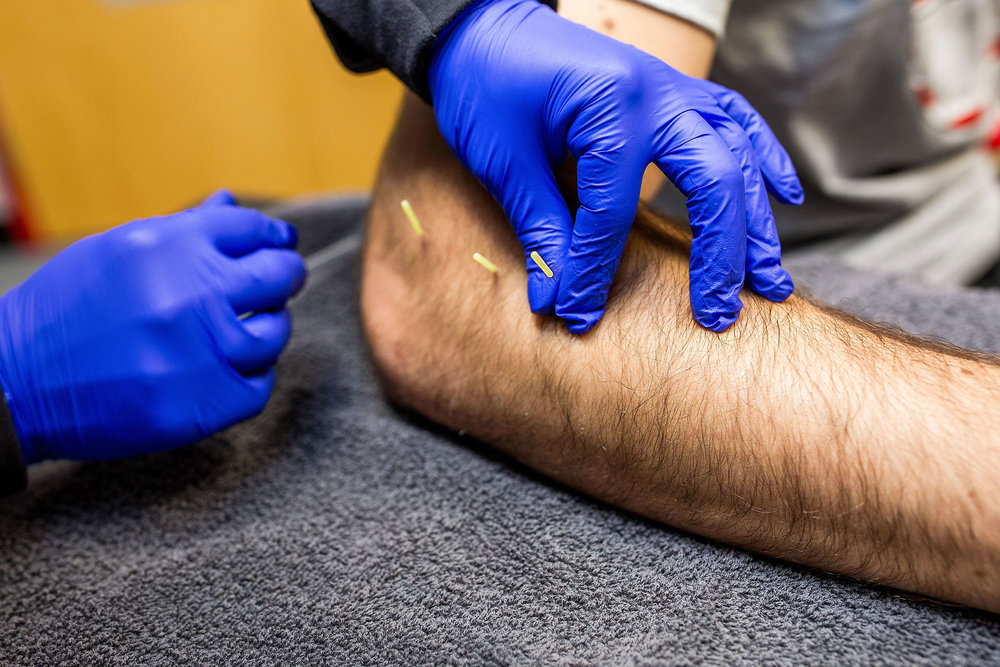
5. Offloading Straps
Offloading straps can also be effective as long as the flexibility and strength issues are treated as well. The strap alone will not address the entire picture. The idea would be to no longer require the strap to complete daily activities that once caused pain.
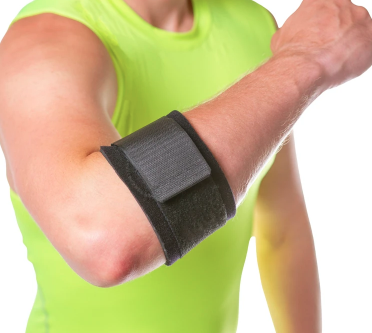
Like all overuse injury, the sooner the most effective treatment is done, the better. Physical therapy is well equipped to properly identify if tennis elbow is in fact the source of your pain, effectively treat it, and offer the right modifications to daily life needed to decrease your pain and prevent it from returning. The stretching and strengthening mentioned here can also be used as preventative measures to prevent tennis elbow from hindering your ability to do what you love at home and at work.
If you are having pain or want to prevent it, contact us to find out how the physical therapy services and workplace health risk assessments provided by Dr. Phil Finemore at WorkFitME, LLC can help you accomplish your goals.

